Nick Kasoff in Ferguson, Missouri asks:
Our local highway and traffic department has striped a “bike lane” on the shoulder of a busy road. Aside from the fact that it is a bike lane, there are two big problems – the concrete aprons from all the driveways extend across the bike lane (but not into the traffic lane), and much of the bike lane is split between “road grade” pavement and “shoulder grade” pavement by a meandering line. Needless to say, such pavement conditions are very unsafe for a cyclist.
I brought this to the attention of the highways and traffic people, and this is how they responded:
“This Department considers the shoulder … suitable for a bike lane.”
I don’t use the bike lane anyway, but its existence makes motorists much more aggressive toward my presence in the traffic lane. So my question is this: Are there any standards at all for condition of the paved surface in a bike lane?
This crappy shoulder condition problem highlights the disconnect between how engineers and legislators define the roadway. The legislature typically defines the roadway as exclusive of the berm or shoulder and bike lanes as that portion of the roadway set aside for the exclusive or semi-exclusive use of bicycles. The engineers routinely include the shoulder in the definition of roadway and than refer to the legal roadway as the “traveled way”.
This nomenclature disconnect sets up the problem Nick is facing, since the engineers consider a bike lane NOT part of the traveled way, but as a part of the engineering roadway via the shoulder, and since shoulder standards are NOT bike compatible, they can tell Nick to suck it up and live with it. Yet if they followed the legal definitions, the shoulder would NOT qualify as roadway space, and could not be converted into a bike lane without upgrading the space to legal roadway (what the engineers call “traveled way”) standards.
This slide showing minimum edge bike lane widths from the classes I teach to professionals, shows the disconnect as it relates to shoulders and bike lanes. CVC = CA Vehicle Code, HDM = CA Highway Design Manual.
[singlepic id=398 w=320 h=240 float=center]
And a similar problem exists for door zone bike lanes:
[singlepic id=402 w=320 h=240 float=center]

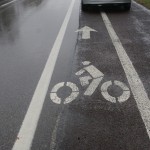
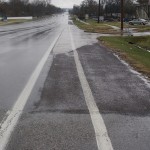
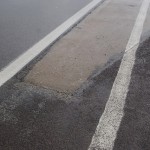
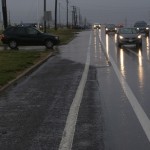
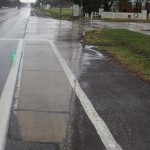
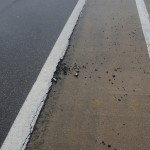

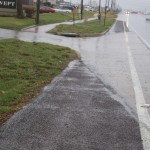
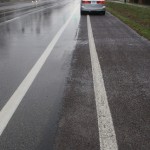
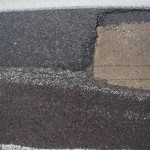
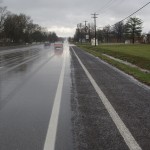
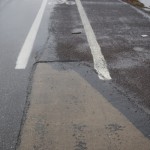
Interestingly, our county traffic engineer defines the bike lane as part of the travelled portion of the street, and would faint if he saw that treatment. This sort of crap is emblematic of bad “highway departments”
Khal,
You county department is far from the norm. Most departments that I know of, and read about, from across the US, tend to treat bike lanes as shoulders with bike markings, rather than real preferential use lanes that are part of the legal roadway.
– Dan –